
If you are on a high protein diet and live an active and busy life, you may be looking for information about snacks high in protein because you do not have the time to prepare meals that meet your nutritional needs.
There are various reasons why you may need a high protein diet and thus want guidance on the best available snacks high in protein.
People on a weight loss diet, athletes, and bodybuilders in high volume training may need high-protein snacks to achieve their physical and health goals. People with prediabetes or diabetes, and people seeking to control or lower their blood sugar levels by substituting their intake of carbs, sugar, and fat with protein may also need snacks high in protein.
Snacks high in protein may promote health
Studies have shown that high protein diets may support health by promoting weight management, reducing body fat, and sparing lean body mass during weight loss.
Trials suggest that increased protein intake may promote bone health by increasing intestinal calcium, lowering triglyceride levels, improving HDL: total cholesterol ratio, and promoting better control of blood sugar.
Studies have also reported that more proteins in your diet may facilitate weight loss by promoting satiety.
According to researchers, protein diets enhance the secretion of peptide YY (PYY), a hormone that promotes satiety through the regulation of gastric emptying.
The ability to suppress hunger and appetite means that you consume fewer calories and therefore have a better chance of losing weight and lowering blood sugar levels.
Protein inhibits the secretion of the “hunger hormone” ghrelin in the stomach. Ghrelin stimulates appetite and fat deposition and promotes growth hormone release.
23 snacks high in protein you can eat on the go
Many people who require a high protein diet don’t always have the time to prepare their meals. Such people often face challenges finding snacks high in protein to satisfy their nutritional needs. Many food stores stock snacks high in calories, sugar, carbs, salts, and fats but low in other essential health-promoting nutrients.
If you are a busy and active person on a high protein diet or planning to adopt one and you’ve been looking for information about healthy high protein snacks, then you’ve found the right guide.
Here is a list of 23 tasty, belly-filling, non-perishable, shelf-stable snacks high in protein that will surely come in handy when you need them.
1. Greek yogurt
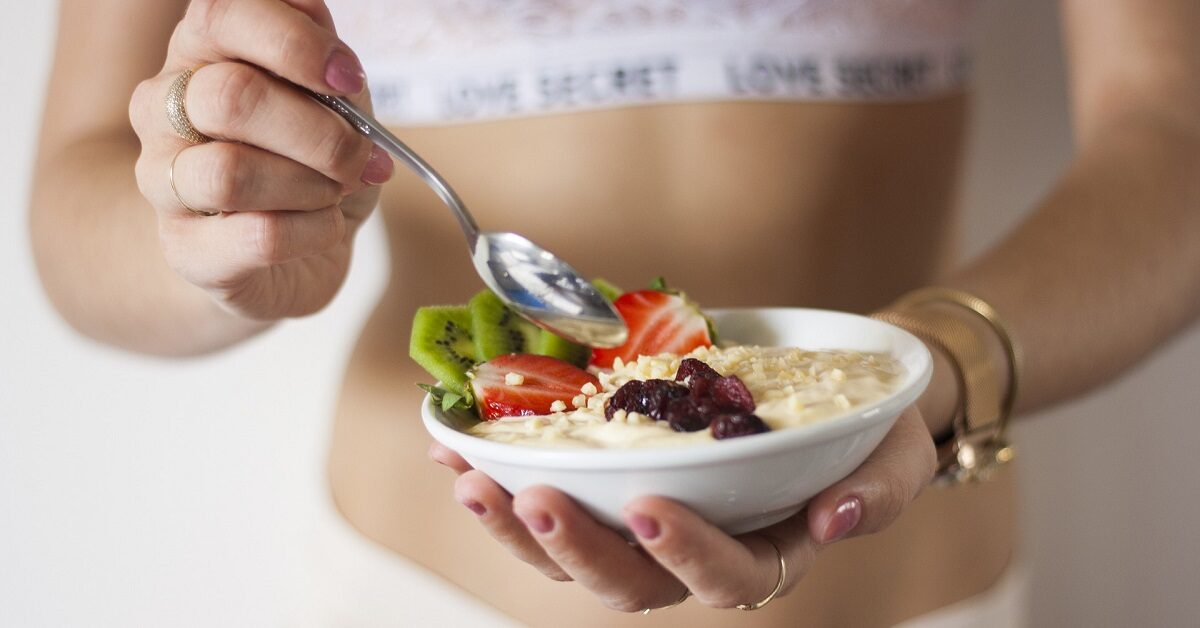
Greek yogurt or “strained yogurt” is a healthy snack high in protein. Yogurt is made from milk through the process of bacterial fermentation. Lactobacillus bulgaricus and Streptococcus thermophilus ferment warm milk by converting the lactose sugar into lactic acid. The production of lactic acid leads to the thickening or curdling of fermented milk and its distinct sour flavor.
The live bacterial content of yogurt (probiotics) enriches the gut with health-promoting bacteria.
Yogurt has the advantage of being able to keep longer than unfermented milk. It is suitable for lactose intolerant people who do not produce the enzyme lactase that digests milk lactose.
Greek yogurt is rich in protein, calcium, magnesium, phosphorus, riboflavin, and vitamin B12.
Studies report that yogurt taken with fruits has many health benefits. It may promote weight loss, prevent type 2 diabetes, and reduce the risk of cardiovascular diseases.
It is better to choose plain yogurt with no added sugar and artificial sweeteners.
2. Hard-boiled eggs
Hard-boiled eggs are healthy snacks high in protein. They are very convenient and easy to take on the go. They are portable and ready to eat and can last for up to a week if stored in a fridge. They can also be stored for several hours in a portable cooler with ice for freezer packs at a temperature of 40 degrees Fahrenheit.
Eggs are nutrient-dense. They are rich in high-quality protein and pack lots of nutrients, including vitamins D, A, E, riboflavin (B2), pantothenic acid (B5), cyanocobalamin (B12), biotin (B7), folate, and choline. They are rich in minerals, such as iron, calcium, potassium, phosphorus. They also contain trace minerals such as iodine, zinc, selenium, and antioxidants zeaxanthin and lutein.
They are also rich in calories but
Health-conscious people avoided eating eggs due to the belief that the high cholesterol content increases blood cholesterol levels. High blood cholesterol levels have been linked with an increased risk of heart diseases. But recent research studies suggest that rather than dietary cholesterol, it is foods high in saturated fats and trans fats that increase the risk of heart disease.
Studies report that eating moderate amounts of cholesterol-rich eggs (up to one egg a day) does not significantly increase LDL (“bad”) blood cholesterol in healthy people. The studies showed that saturated and trans fats, rather than dietary cholesterol, play a primary role in increasing total blood cholesterol and “bad” LDL cholesterol.
However, health experts warn that while eating an egg a day is safe, eating several eggs a day, especially omelets and scrambled eggs, may not be safe.
Health authorities advise people trying to control total and LDL cholesterol and people with health issues, such as diabetes and heart problems, to eat egg whites instead of egg yolks.
Besides their cholesterol content, eggs are also rich in monounsaturated and polyunsaturated fats.
3. Whole food meal replacments, snack bars, and shakes
Whole food meal replacement products provide complete protein containing all essential amino acids you need to achieve your physical and health goals.
if you are an athlete or bodybuilder who lives a busy and active life and don’t have the time to prepare meals that meet your nutritional needs, you may prefer to meet your high protein requirements by purchasing whole food meal replacement products.
Protein snack bars and shakes are also popular snacks high in protein. They are handy, and you can eat them at any time and place.
A1Supplements.com – Lose Fat, Gain Muscle!
Protein snack bars are made from different types of high-protein foods such as soy, whey, and egg white. Protein shakes and bars also have added vitamins and minerals. You should avoid shakes that have added sugar or other artificial sweeteners.
Protein shakes are filling snacks that promote satiety. Studies show that people who eat higher protein tend to consume fewer calories overall.
You can eat protein shakes with milk or fruits.
4. Jerky
Jerky is typically lean meat with the fat trimmed off. It is a non-perishable, shelf-stable, and portable food that will remain unspoiled for a long time if stored in dry conditions and at room temperature.
Beef jerky contains high-quality protein and is a convenient snack to eat on the go.
Jerky is made from several types of meat, including beef, mutton, pork, and venison. You can also make jerky from low-fat fish such as salmon, trout, bass, and pike. Many food stores stock jerky. Look at the labels carefully to identify brands high in added salt and added sugars.
However, you can make your own jerky if you have the time to do so.
5. ‘American’ Biltong
Biltong is essentially the Southern African version of jerky, but American versions of the versatile high-protein snack are now available in many groceries. It is made from various types of meat, including beef and game meats. Biltong is prepared by drying, curing, spicing, and cutting meat into strips or thin slices.
It is a very portable and shelf-stable food that can serve as a ready-to-eat snack high in protein.
Choose only low sodium brands of the product.
6. Beef sticks

Beef sticks are high-protein snacks that are easy and convenient to eat on the go when hunger hits. They are portable, shelf-stable, and non-perishable snacks made from ground and dried meats chopped and stuffed in a casing with salt and seasoning added.
Non-perishable means they have a very long shelf life. They are easy to store and will not spoil for a long time when kept at room temperature without refrigeration.
They also have the advantage of being ready-to-eat without cooking.
You can make beef sticks from different types of meat, including beef, pork, chicken, elk, bison, and venison.
Like other protein snacks, beef sticks help to stave off hunger and reduce overall calories consumed due to the satiety it induces.
Besides protein, beef sticks are a good source of phosphorus, potassium, zinc, and iron.
The best quality beef sticks are made from grass-fed animals rather than grain-fed cattle. Some studies report that beef from grass-fed animals has higher omega-3 fatty acid content.
The best quality beef sticks also come from animals fed no antibiotics and no added hormones.
You may prefer to avoid beef sticks prepared with chemical preservatives and MSG.
7. Canned Tuna
Canned tuna is a healthy, shelf-stable, and portable snack high in protein. It is high in protein and low in calories and fat. However, canned tuna packed in oil has higher calories. If you want to cut calories, avoid tuna canned in oil. Instead, choose tuna canned in water.
Besides high protein, tuna in water is also rich in heart- and brain-friendly omega-3 fatty acids (DHA and EPA) and low in saturated fats. It is rich in vitamins such as vitamin D, B vitamins, and trace minerals such as selenium and iodine.
A study by Maqbool and colleagues reported that light tuna canned in water may be a better source of omega-3 fatty acids — long-chain n-3 polyunsaturated fatty acids (LC n-3 PUFA) — for healthy individuals. They also found that tuna canned in oil may be better for people with chronic illnesses (such as cystic fibrosis) that require an increased intake of essential fatty acids.
You may also want to choose brands with lower sodium content.
Health experts have voiced concern about the potential risk of tuna contaminated with the heavy metal mercury.
The FDA recommends eating fish and seafood, including canned tuna, but advises consumers to look for low mercury products, such as canned light tuna (including skipjack).
8. Canned salmon
Canned salmon is another portable, ready-to-eat canned fish product that can serve as a convenient snack high in protein.
Canned salmon is rich in protein, vitamin D, calcium, iron, and potassium. They are good sources of polyunsaturated and monounsaturated fats. Canned salmon is also rich in heart- and brain-friendly anti-inflammatory omega-3 fatty acids.
Unopened canned salmon has a very long shelf-life but must be eaten within a few days after it is opened. But you may keep open canned salmon for longer by freezing it.
Experts have raised concerns about the risk of eating salmon contaminated with potentially toxic substances such as pesticides, dioxins, and polychlorinated biphenyls (PCBs). EPA classifies PCBs as potential carcinogens. A recent study reported that farm-raised salmon have significantly higher levels of PCB than wild salmon. Fortunately, most canned salmon contains wild salmon.
Experts also advise that you avoid eating the skin of farm-raised salmon and the fat directly beneath the skin because that is where most of the toxic substances are stored.
You can eat canned salmon with various other foods, including macaroni and cheese.
9. Low-fat cheese

Low-fat cottage cheese is an excellent, pleasant-tasting snack high in protein. It is suitable as a snack due to its portability and long shelf-life. Hard cheeses such as cheddar, Parmigiano, Grana Padano, and Pecorino can be stored without refrigeration, making them very convenient for snacking on road trips.
Cheese is a nutrient-dense food made from milk obtained from cows, sheep, goats, and other animals, such as buffalo.
Cheese is made by adding an acidic coagulant — vinegar or enzyme rennet found in the stomach of cows — and bacterial cultures to milk. The coagulant and enzyme activity causes milk protein casein to coagulate. The bacterial activity also converts lactose to lactic acid. The curds are left after draining the liquid whey is removed.
Cheese is rich in high-quality protein and minerals such as calcium and potassium. It is also high in vitamins A, B2, and B12.
It contains healthy monounsaturated and polyunsaturated fat, as well as saturated fats.
Due to its high saturated fat content, health experts don’t recommend a high intake of full-fat cheese. Consuming foods high in saturated fats can increase LDL cholesterol levels and consequently the risk of heart diseases.
You may want to choose low-fat cheeses in place of high-fat cheese.
The low lactose levels of cheese also make it a better choice for people with lactose intolerance.
You can eat cheese with crackers, vegetables, salad, soups, or fresh fruits, including apples, apricots, cherries, and dates.
10. Skim milk
Skim milk, or nonfat milk, is whole milk with the fat removed. It is a convenient snack for people who want a high protein and low-fat diet.
However, it contains lactose and may not be suitable for people with lactose intolerance. You will also need a cooler to store it if you want to consume it on the go.
11. Powdered, milk powder, or dry milk
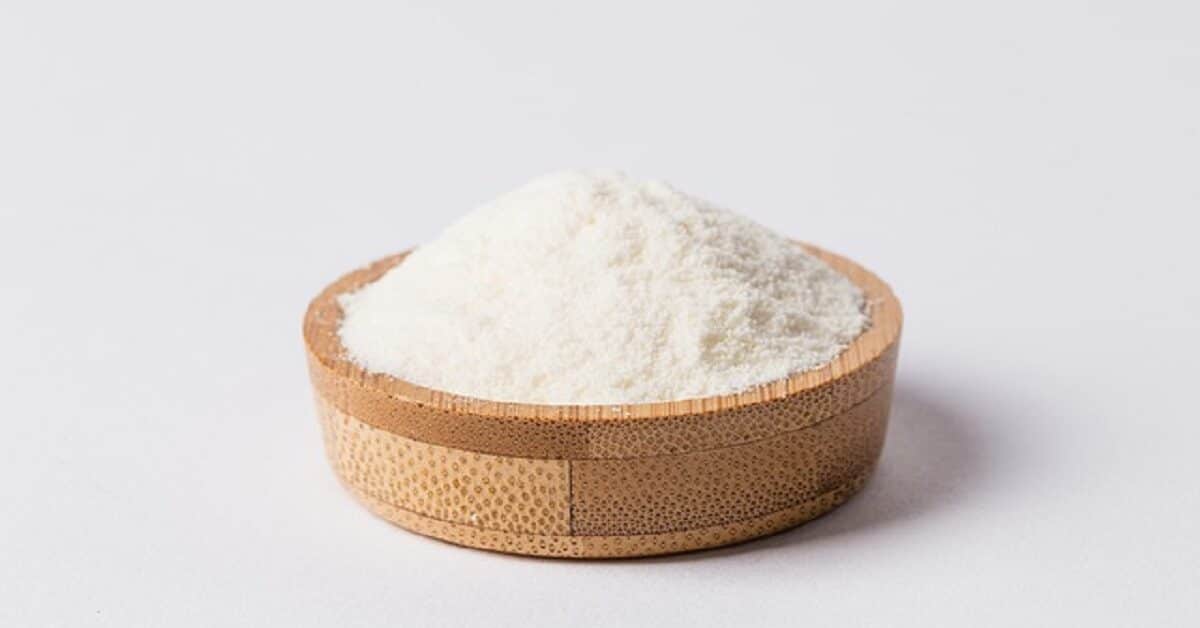
Powdered milk, milk powder, or dry milk is a versatile, portable, easy-to-prepare, and non-perishable snack high in protein. It is best for people who can digest lactose.
It is made by evaporating the water content of milk until only the solid content is left.
The versatility of powdered milk is because it can be transported over long distances in simple containers and reconstituted into a refreshing drink by simply adding water.
People on long road trips and hikers often include powdered milk in their supplies as an easy-to-prepare snack high in protein.
It has a long shelf life and can be stored for a long time without refrigeration. That is why milk powder is a popular item for international food aid supplies to areas hit by natural disasters, war zones, and famine-hit countries.
Non-fat powdered milk is more readily soluble in water. Whole powdered milk may need warm water to dissolve.
Powdered milk is rich in amino acids, vitamins, and minerals.
12. Almonds
Almonds are nutritious, healthy high protein nuts that you can easily snack on at any time. They are available at groceries, and you can choose from raw and roasted (oil-roasted or dry-roasted) varieties. Packaged almonds can also be honey-sweetened or salted. You may want to avoid packaged almond products with high salt content and added flavors that increase carbs and sugar content.
When stored in a cool, dry place, almonds have a very long shelf-life that makes them convenient as snacks high in protein.
They are healthful snacks rich in protein, fiber, and vitamins such as vitamin E, B2 (riboflavin), and biotin (B7). They are also rich in minerals, including calcium, phosphorus, magnesium, and trace minerals, such as copper.
Almonds contain “healthy” monounsaturated and polyunsaturated fats. They are low in “unhealthy” saturated fats. The nuts are also a good source of phytonutrients, including phenolic acids, sterols, and flavonoids.
The phytonutrients in almonds support the growth of health-promoting microbes in the gut. The microbes reduce inflammation and prevent insulin resistance that causes type 2 diabetes.
Despite being good sources of calories, studies indicate that almonds do not promote weight gain. Almonds help to control weight gain and prevent obesity.
Studies suggest almonds reduce “bad” LDL cholesterol and thus help to lower the risk of heart and vascular diseases. Recent studies report that nuts such as almonds may lower the risk of atrial fibrillation, a form of abnormal heart rhythm.
Almonds also have antioxidant properties that may lower the risk of breast cancer in women.
13. Pumpkin seeds
Pumpkins belong to the Cucurbitaceae family of plants commonly referred to as squashes. They belong to the species of squashes known as winter squashes.
Pumpkins and their seeds make healthful snacks but only the seeds are rich in protein.
Pumpkin seeds are portable and have a high shelf-life. They can be eaten on the go roasted, raw, and salted.
However, health experts advise that people take their pumpkin seeds unsalted to avoid high sodium intake.
You can eat pumpkin seeds alone or with other foods, such as yogurt, salads, cereals, and fruits.
Besides protein, pumpkin seeds are rich in fiber, vitamins B2 (riboflavin) and folate. They contain vitamin A, E, K, and antioxidant carotenoids. They also contain minerals, such as magnesium, iron, phosphorus, calcium, and trace minerals, including manganese, copper, zinc, and selenium. They are rich in heart-friendly polyunsaturated fats.
Pumpkin seeds also contain omega-6 and omega-3 fatty acids and are rich in phytosterols.
The magnesium content of pumpkin seeds is involved in several physiological processes, including control of blood pressure. They contribute to bone health and may help to lower the risk of heart diseases.
The combination of proteins and fiber makes pumpkin seeds filling snacks that can play a role in weight loss diets.
Research studies indicate that pumpkin seeds are rich in antioxidants that have anti-inflammatory properties. They may also protect against certain types of cancer.
Due to their low glycemic index, pumpkins seeds may play a role in controlling high blood sugar levels.
14. Nut butter, such as cashew nut butter
Cashew nut butter is a tasty and nutritious high protein snack suitable for eating on the go. It is made from roasted or baked cashew.
Cashew nut butter is available in many grocery stores.
They contain folate, B vitamins, and minerals such as phosphorus, magnesium, and potassium. They are also rich in healthy unsaturated fats.
There are several other kinds of nut butter that serve as food spreads. They include almond butter, brazil nut butter, pistachio butter, pinenut butter, pecan butter, hazelnut butter, and acorn butter.
Avoid nut butter products that have sugar and lots of salt added.
15. Lentils
Lentils are highly nutritious plant-based snacks high in protein. They are legumes with a pleasant nutty flavor. They are rich in protein and fibers. They also contain folate, and minerals such as iron, potassium, and manganese.
They have low sodium content, generous amounts of saturated fats, and antioxidant polyphenols. Lentils have a low glycemic index (low ability to increase blood sugar) due to complex starches that digest slowly. They are suitable for people with diabetes, prediabetes, and others trying to control their blood sugar levels.
The complex, slow-digesting starch also supports the proliferation of beneficial gut bacteria that promote the overall health of the digestive system.
Studies show that lentils may prevent diabetes, cancer, heart diseases, and obesity.
You can buy whole lentils (with husks), dehusked lentils (split lentils), dried or canned lentils. Dried lentils have a long shelf-life, while canned lentils are easier to cook.
16. Kidney beans
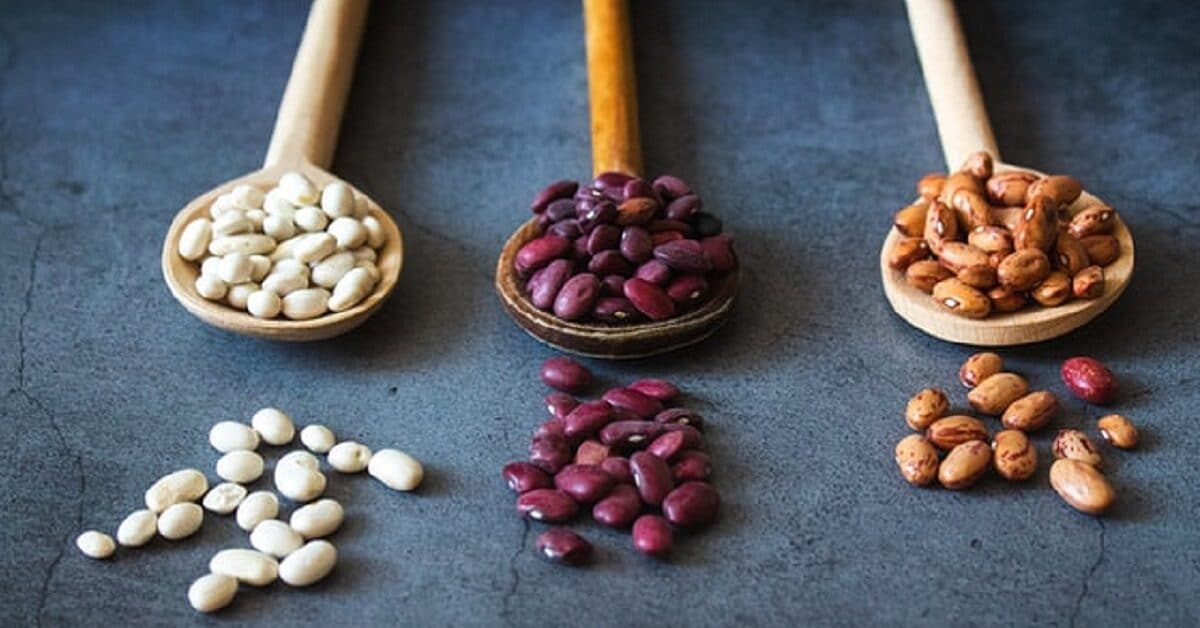
Kidney beans are high-protein legumes that come in many varieties. You may prepare them for snacking by roasting. Kidney bean salad is also a delicious treat.
They are widely cultivated in Mexico and Central America and serve as a source of plant protein for millions. Kidney beans are toxic when raw but can contribute to a plant protein-based diet when properly cooked.
They are high in proteins, carbs, and fiber. They also have minerals, such as potassium, manganese, iron, and copper. Kidney beans are rich in vitamins, including K1 (phylloquinone) and folate (B9).
Research studies suggest that white kidney beans may play a role in diets designed to promote weight loss. According to a study by Wang and colleagues, white kidney beans (Phaseolus vulgaris L.) extract can induce significant weight loss when taken regularly for a short time.
Kidney beans have a low glycemic index (GI). Nutritionists use the GI score to measure the tendency of a food item to cause blood sugar spikes after a meal.
Studies report that consumption may promote blood sugar control. A study by Liu and colleagues concluded that white kidney beans and mulberry leaf extract mix improve postprandial (post-meal) glycemic control in pre-diabetic individuals.
The mechanism for lowering blood pressure could be partly through the high fiber content and complex carbs that tend to be released slowly into the bloodstream as sugar.
Kidney beans may also help to reduce the risk of cancer, studies concluded.
However, some people have difficulty digesting lots of beans and suffer digestive disturbances, including flatulence and bloating, when they eat lots of beans.
17. Chickpeas: Roasted, dried or canned
Chickpeas (garbanzo beans) make excellent tasty snacks high in protein. They have a pleasantly creamy and buttery flavor.
Chickpeas belong to the same family of plants as kidney beans. The legumes family (Leguminosae or Fabaceae) includes Kidney beans, lima beans, and peanuts.
Chickpeas produce seeds that are very rich in nutrients, including proteins, vitamins, and minerals.
Chickpeas are a good source of protein, fiber, B-complex vitamins, and minerals, such as iron and phosphorus. They also contain generous amounts of health polyunsaturated and monounsaturated fatty acids.
Chickpeas have a low glycemic index. A low GI makes chickpeas suitable for diets designed to control blood sugar levels in diabetic patients.
Studies report that chickpeas suppress post-meal blood sugar levels and reduce overall calorie intake. According to Zafar and colleagues, the consumption of chickpeas supports glycemic control and may help in body weight management by reducing appetite and lowering calorie intake.
Chickpeas contain the resistant starch amylose that digests slowly and thus prevents postprandial (post-meal) blood sugar spikes in people with type 2 diabetes. It also contains raffinose, a soluble oligosaccharide fiber that is broken down in the gut by bacteria Bifidobacterium to produce the anti-inflammatory fatty acid butyrate. Butyrate’s anti-inflammatory properties may help to prevent colon cancer.
Chickpeas may also modulate intestinal bacteria to improve gut health, Fernando and colleagues reported.
Soaking chickpeas before cooking may reduce oligosaccharides that cause the digestive discomfort some people experience after eating legumes.
Chickpeas also contain sitosterol, a plant sterol that lowers cholesterol levels by reducing its absorption. Since high cholesterol levels have been linked with coronary heart disease (CHD), the consumption of chickpeas may help to lower the risk of heart diseases.
The high fiber content of chickpeas and heart-friendly unsaturated fats may protect from heart diseases.
Chickpeas are available at grocery stores, and you can purchase them canned, dried, or roasted. You can also obtain fresh chickpeas at farmer’s markets. Dried beans have a long shelf-life. You can cook them after soaking for a few hours or overnight.
You can prepare and eat them with salads and stews, with seasoning and olive oil added.
Canned beans would likely be more convenient for people who don’t have the time to cook. You may want to choose canned beans with no added salt or sweeteners.
18. Chia seeds
Chia seeds are a healthful snack high in protein. They have found a wide variety of uses in the food industry. When stored in a dry and cool place without refrigeration, chia seeds can last up to 4 years.
They are easy to cook and can be prepared with other food items. Chia pudding is a delicious snack made from milk. You can also make it with almond milk, soy milk, or fruit juices with nuts and cinnamon added.
Bakers use chia seeds as egg replacers. Commercial food processors use them to boost the nutritional values of a variety of products, including baked products, crackers, and beverages.
Chia seed protein is a complete plant protein with all the essential amino acids humans need from their diet.
Chia seeds are rich in fiber, calcium, and trace minerals such as zinc and copper. They are also an excellent source of healthy polyunsaturated fats and omega-3 fatty acids.
They are rich in alpha-linolenic (ALA) fatty acids, a type of omega-3 fatty acids found in plants. Omega-3 fatty acids lower total and “bad” LDL cholesterol levels and thus help to reduce the risk of high blood pressure, blood clots, inflammation, abnormal heart rhythms (such as atrial fibrillation), cardiovascular diseases, and inflammation.
Chia seeds have a low glycemic index (GI) due to fibers that slow down digestion and help to prevent sugar spikes after meals. The slowing down of digestion also contributes to weight gain control by promoting satiety. The fibers may also play a role in reducing levels of LDL cholesterol.
19. Quinoa seeds
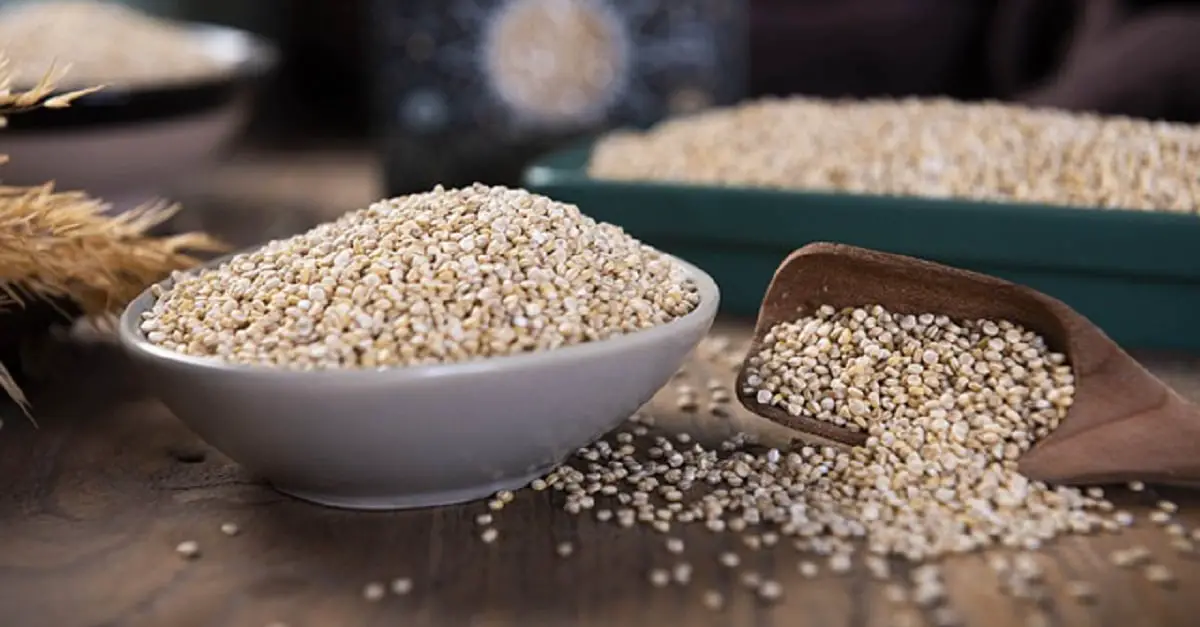
Quinoa is a plant native to South America that belongs to the family amaranthus. There are several varieties of quinoa seeds with different colors. South Americans have cultivated the plant since ancient times.
Quinoa seeds are harvested with an outer coating that contains a substance known as saponin. Most commercial processors remove the coating and wash the seeds to remove the saponins. But some producers still advise consumers to rinse them thoroughly before preparing for consumption.
Quinoa seeds are a nutritious food rich in protein, carbs, and fiber. The plant protein contains all the amino acids we need for good health.
Quinoa seeds are rich in vitamins such as thiamine (vitamin B1) and minerals such as magnesium, manganese, and phosphorus.
It has the advantage of being a gluten-free product, making it safe for people with celiac disease.
It can be prepared as a snack in different ways. You can boil it in water with seasoning to make a dish similar to rice. You can also eat it as a breakfast cereal with milk.
But what is probably the most convenient snack is pop quinoa. Like popcorn, pop quinoa is a portable, ready-to-eat food that can be stored in a container and eaten on the go.
20. Edamame
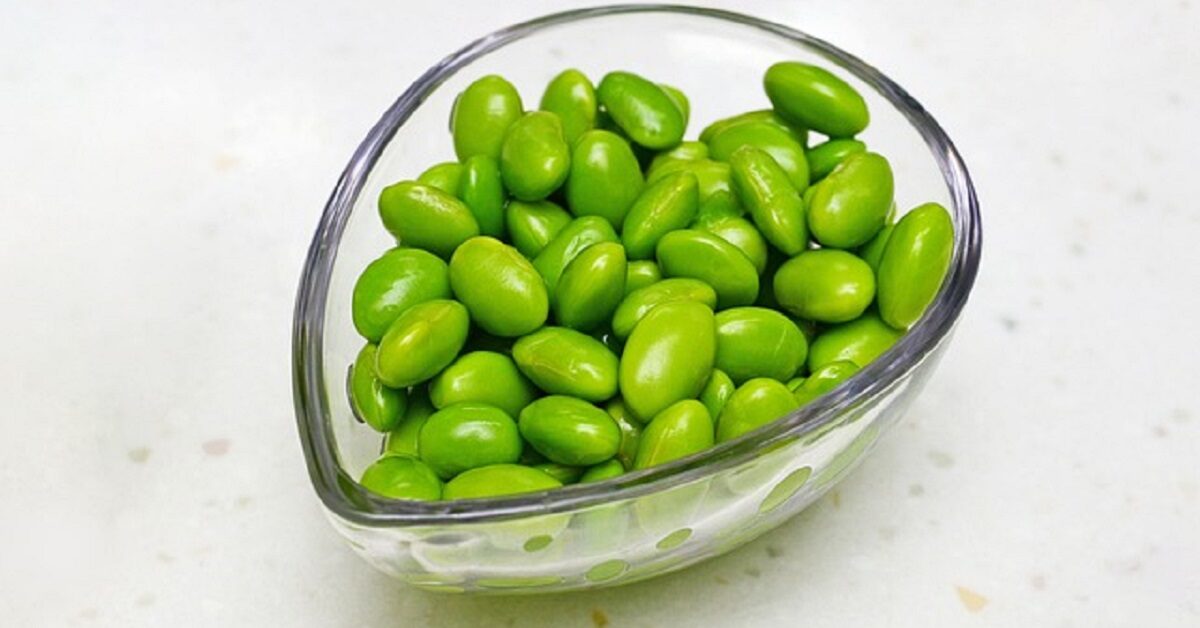
Edamame beans are soybeans harvested before they mature or ripen in the pods. They are good-tasting, low in calories, gluten-free, and are snacks high in protein. They are also a source of vitamins such as K, folate, thiamine, riboflavin, and choline. They are a good source of minerals such as calcium, magnesium, phosphorus, potassium, iron, copper, and manganese.
Edamame is also a good source of heart-friendly monounsaturated and polyunsaturated fats.
Soy foods generally have a low glycemic index. They do not cause post-meal (postprandial) blood sugar spikes. They are suitable for individuals watching their blood sugar, including people with prediabetes or diabetes.
Studies suggest that eating soy proteins may reduce your blood cholesterol and thus protect against cardiovascular diseases. Researchers report that soy proteins reduce “bad”(LDL) cholesterol.
Anderson and colleagues concluded that eating soy proteins significantly lowered total cholesterol, “bad” LDL cholesterol, and triglycerides levels without any significant increase in “good” HDL cholesterol levels.
Some studies also report they may reduce the risk of cancers, including prostate cancer in men.
Studies indicate that isoflavones in soy products have antioxidant properties.
Wei and colleagues reported that isoflavones in soy products lower the risk of osteoporosis in postmenopausal women by increasing bone mineral density (BMD).
The folate content of soy products is also believed to reduce the risk of depression. The choline content suppresses oxidative stress and inflammation in asthma patients. Folate can be used to treat asthma patients, according to Mehta and colleagues.
You can buy pre-cooked edamame at food stores. You can prepare the pre-cooked product by heating in a microwave, roast frying, or steaming. You can store the prepared food in a portable container to eat on the go.
21. Granola bars
Granola bars are snacks made from a mixture of ingredients, including oats, nuts, dried fruits, coconuts, raisins, and chocolate chips. They are generally convenient and ready-to-eat snacks.
However, due to the variety of ingredients that can go into granola bars, different products may have significantly different nutritional values.
But generally, granola bars are a good source of protein and fiber, making them healthy snacks. However, you should avoid granola bars with lots of sugar added.
Choose granola bars with healthy ingredients such as fruits, nuts, and seeds.
22. Tofu
Tofu is a nutritious snack high in protein. They are made from coagulated soy milk compressed into curds. Tofu is rich in protein, fiber, and fat, and can be eaten fermented or unfermented. Fermenting involves culturing tofu with beneficial bacteria, mold, and yeast to break down its sugar content.
Soy protein is a complete protein that contains all nine amino acids humans need to obtain from their diet. It is low in calories but rich in B vitamins and minerals, including iron, calcium, phosphorus, potassium, and magnesium. It contains trace minerals such as copper, zinc, selenium, and manganese.
Tofu is rich in phytoestrogen isoflavones (genisten and daidzen). Isoflavones are called phytoestrogens because they are similar in chemistry and function to human estrogens.
Recent studies concluded that Isoflavones significantly reduced the risk of heart disease.
A study conducted at Harvard T.H. Chan School of Public Health found that people who ate tofu had a reduced risk of heart disease.
Despite the ascribed health benefits, tofu has been the subject of controversy due to fears about the safety of genetically modified soybeans (much of the soybeans produced in the U.S are genetically modified (GMO)).
Although there is no scientific evidence that GMO foods are harmful, some people remain wary of taking them. If you prefer to avoid GMO foods, you may look for non-GMO soy instead.
Due to the similarity of isoflavones to estrogen, some are concerned it could cause diseases such as hormone-sensitive breast cancer, thyroid problems, and even dementia.
Some research studies suggest that tofu may reduce the risk of stroke and coronary heart disease.
23. Sunflower seeds
Sunflower seeds are yet another healthy snack high in protein. They are made from seeds obtained from the flower of the plant. They are highly portable and shelf-stable food that can be eaten raw or roasted.
Sunflower seeds are rich in protein, fiber, vitamins E, B1 (thiamine), niacin (B3), pantothenic acid (B5), and folate (B9). They are also rich in minerals, including iron, magnesium, and trace minerals such as copper, and manganese. They contain immune system boosting zinc and anti-inflammatory selenium.
They are rich in polyunsaturated and monounsaturated fats, including linoleic acid. Linoleic acid is linked with a lower risk of heart diseases.
The phenolic compounds, flavonoids, and polyunsaturated fatty acids in sunflower seeds have antioxidant, antimicrobial, and anti-inflammatory properties, according to Guo and colleagues. They protect against cardiovascular diseases.

